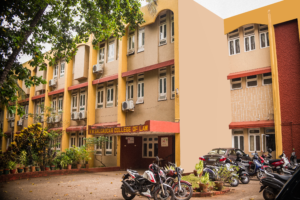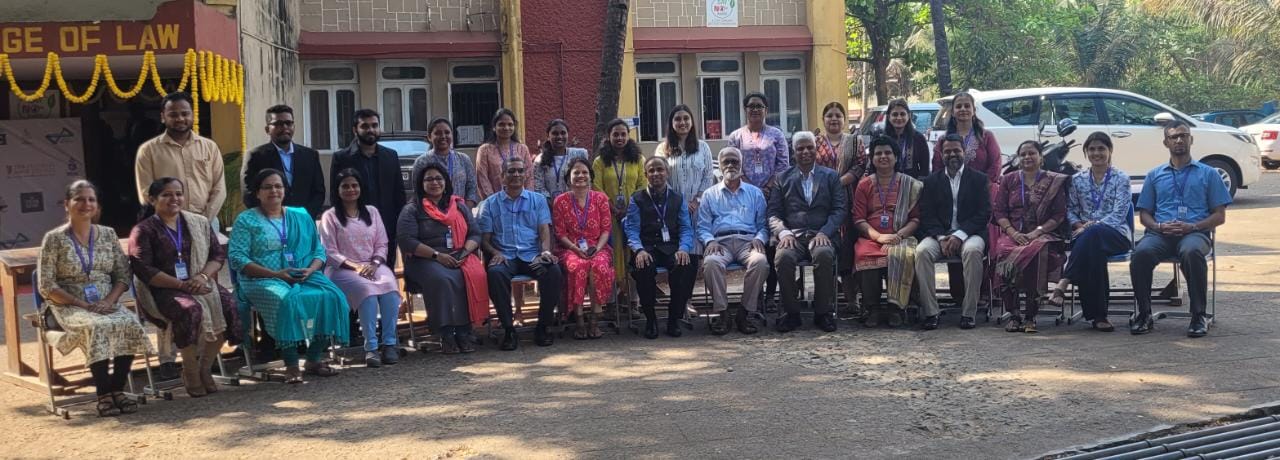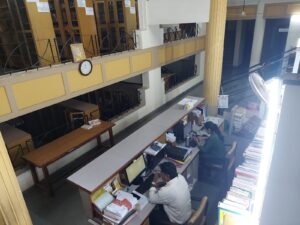Nutritional Security and Integrated Child Development Services
EditorialNutritional Security and Integrated Child Development Services
Dr. K.R. Aithal
![]()
The rapid eliminations of famines in India, since independence, is certainly an accomplishment that contrasts with the failure of many other developing countries5. However, chronic hunger and under malnutrition still plague millions of people in India and estimates of nutrition indicate that the situation is worse than that of Sub-Saharan Africa where intermittent occurrence of famine continues even today.
There are two types of hunger, namely, explicit hunger and chronic or endemic hunger. The former largely self-reported and was due to non-availability of sufficient food6. The latter manifests itself in a lower intake of essential calories, proteins, fats and micronutrients resulting in under development of the body and mind7. The explicit hunger or self-reported hunger is measured by asking people about availability of two square meals a day8. The suitability of this method is often questioned on the ground of subjectivity and the nature of the respondent9.
The second kind of hunger occurs when human body gets used to having less food than necessary for healthy development leading to malnutrition10. This type of hidden hunger can be measured by using objective indicators such as calorie consumptions, body mass index, stunting and lack of sufficient variety in food intake11. The IFPRI developed a composite index on hunger called Global Hunger Index (GHI). The GHI was designed to capture three dimensions of hunger, namely, lack of economic access to food, short falls in nutritional status of children and child mortality. Accordingly the GHI includes the three equally weighted indicators, the portion of people who are food energy deficient according to U.N. Food and Agricultural Organisation (FAO) estimates, the portion of children under the age of five who are underweight according to World Health Organisation (WHO) estimates, and the under-five mortality rate estimated by UNICEF12.
The estimate of IFPRI pointed out that there are 230 million Indians go hungry every day, i.e. without two square meals a day; 21 percent of its people are undernourished, i.e. they do not have access to sufficient calories, proteins and micronutrients necessary for the healthy growth of the body and mind; and nearly 44 percent of its children below the age of 5 years are underweight and 7 percent of them dying before reaching five years of age13. Hunger affects the ability of individuals to work productively, to think clearly and to resist disease. Hunger may lead to low output and hence low wages leading to poverty. Hunger is both cause and effect of poverty. Hunger is attributed to chronic food insecurity and even today policy makers attempt to find solutions to the problem of hunger and malnutrition in food security.
The Government of India launched the Integrated Child Development Services (ICDS) programme in 1975 in recognition of the importance of early childhood care as the foundation of human development. The ICDS is currently the most significant Government intervention for reducing maternal and childhood malnutrition, and has emerged as the world’s largest programme of its kind. The long standing neglect of child care services in India arises from a common assumption that the care of young children is best left to the household. Parents are indeed best placed to look after their young children, and generally do take care of them. But parents often lack the resources, energy, power or time take adequate care of their children, even when commitment and knowledge of what has to be done are not lacking. What they can do for their children depends on various forms of social support, including health services, crèche facilities and maternity entitlements14. Further, many parents have limited knowledge of matters relating to child care and nutrition. These and many reasons, it is the duty of the State to take care of children with the support of the society. In principle there is much room for this in ICDS. The only programme aimed at children less than six years of age. The aim of ICDS is to provide integrated health, nutrition and preschool education services to children under six through local anganawadi. However, ICDS tends to be starved of resources, attention and political support. It is only in recent years that the programme has come to life, largely due to Supreme Court orders that have compelled the Government to reframe it in rights perspective15. This section traces the development of ICDS, its growth, achievements and failures.
Evolution of ICDS
![]()
The schemes that were subsequently taken up included the Applied Nutrition Programme 1963 and the Special Nutrition Programme of 1970-71 aimed at increasing nutritional awareness, encouraging food production and distribution of nutrition rich diet. These programmes were implemented through various agencies like balawadi, mahilamandal, panchayats, and municipalities. The Balawadi nutrition programme was started in 1970-71 with the objective of providing nutrition rich food to children of 3-5 years age group from low income families17.
Though many welfare schemes for children were being implemented through various agencies and departments, a study conducted by the Planning Commission revealed that the benefits reached only a small portion of the targeted groups at the local level. The study stressed the need to implement various programmes relating to nutrition, health care, education and social welfare have to be implemented in a co-ordinated manner linking various department at all levels. As a response to the study, a National Policy for Children was adopted in August, 1974. The policy said “….. Children’s programmes should find a prominent part in the national plans for the development of human resources. It was felt that it shall be the policy of the State to provide adequate services to children, both before and after birth and through the period of growth, to ensure their full physical, mental and social development”. At the same time, during 1975, it was found that in India maternal Mortality Rates (MMR) and Infant Maternity rates (IMR) were found to be very high. Hence, the ICDS was launched in a few places which were highly backward and the scheme was introduced in 33 blocks.
The ICDS has grown rapidly in recent years covering more than 90 percent of development blocks. Its reach also has been increased by March, 2009, it covers 6,120 development blocks and the services have been made universal by the direction of the Supreme Court.
Objectives of the ICDS
![]()
The ICDS scheme aims at holistic development of children in the age group of zero to six years and pregnant and lactating mothers. The objectives of the scheme are:
The way justice was looked at by courts and the role that higher courts were expected to play in the socio-economic transformation of the country, got fundamentally changed for the good. Judges who still wanted to continue in the conventional mold found it difficult to demolish the new jurisprudence of Krishna Iyer variety and the activism attached to it.
Social Justice, understood in the spirit of the Preamble, Fundamental Rights, and Directive Principles rather than conventional theories of Public Law based on precedents, assumed dominance in judicial thinking and a new constitutional culture emerged in legal and judicial circles. Lawyers, who initially ridiculed PIL judges as publicity judges, came to appreciate their philosophy. Social justice became the focus of legal discourses in courts and outside which forced judges to innovate new tools, techniques, remedies, and procedures. Court-appointed Commissions, continuing Mandamus, near-total abandonment of Locus Standi doctrine, substantial modification of adversarial legalism and manipulative lawyering, court-monitored special investigation teams in high profile cases, the democratization of judicial remedies, etc. became part of Indian judicial practice to the advantage of access to justice to the marginalized.
Legal Aid got broad-based and the poor got a stake in the judicial system. Judiciary took control of administering legal aid. Lok Adalat and ADR got into mainstream methods of dispute settlement.
Judiciary got unprecedented public support and became powerful in the exercise of judicial review of executive action. The result was a boost to Constitutional Governance and Rule of Law.
Finally, many socio-economic rights which were left inchoate and inarticulate in the Directive Principles got transposed into part of guaranteed rights through ingenious ways of harmonious and purposive construction of constitutional provisions. As a result, citizens got more freedom and rights and the Executive Government, less opportunity for arbitrariness in decision making.
Services Provided under ICDS
![]()
Non formal Pre-school education (PSE)
immunization
Health checkup
Referral services
Nutrition and Health Education
ICDS is designed to provide services to children, pregnant woman (PW), lactating mothers (LM) and adolescent girls (AG). The specific services provided through ICDS include:
Supplementary feeding
Services Provided under ICDS
![]()
| Target Group | Health check-ups and treatment | Nutrition related service | Educational services |
|---|---|---|---|
| Children below 3 years |
|
| |
| Children ages 3-6 years |
|
|
|
| Adolescent girls ages 11-18 years |
|
|
|
| Pregnant women |
|
|
|
| Nursing mothers |
|
|
|
| All women (15-45 years) |
|
Organisational Structure of ICDS
![]()
At State level, the State Government may designate Department such as Woman and Child Development, or Social Welfare Department such as Woman and Child Development, or social welfare or Health or Rural Development, or Community Development or Tribal Welfare or any other to monitor and implement the programme within the State.
The programme is decentralized at State level and at the District level, District officer, Collector or District Development Officer or Deputy Commissioner, is responsible for co-ordination and implementation of the programme.
At the block level, the Child Development Project Officer (CDPO) is incharge of implementing the programme and each block consists of around 100 AWC. To facilitate supervision, the block is further divided into 4–5 circles depending upon the number of AWC, each circle has a supervisor who monitors 20 to 25 AWC and reports to the CDPO. In large rural land tribal blocks are Additional Child Development Project Officer (ACDPO) is also appointed and he forms the link between the supervisors and the CDPO.
At the village level, the package of health, nutrition and educational services are provided at the anganwadi (AWC) located in the village or urban slum areas to carry out the programme. AWC is the focal point for ICDS services delivery that normally operates daily for four hours except Sundays and holidays. The Anganwadi worker (AWW), a woman is the key functionary of ICDS at the grass root level. AWW is a voluntary worker and paid an honorarium of Rs. 1,500/- per month, usually recruited from within the local community. She is assisted by an Anganwadi helper (AWH) who receives a monthly honorarium of Rs. 750/-. Neither the AWW nor her helper is a regular Government employer.
The following chart depicting role and responsibilities of various authorities at the central, State and field levels in planning, funding executing and monitoring schemes formulated under ICDS from time to time.
Funding of ICDS
![]()
Apart from the Central and State Governments, the World Bank and UNICEF are the major promoters of the scheme. UNICEF assists the ICDS programme mainly through the provision of vehicles growth monitoring charts, photocopier and weighing scales and the like.
The World Bank has supported efforts to improve nutrition in India, in general since 1990 through five projects. The first project was Tamil Nadu’s Integrated Nutrition Project, 1980-89 and funding similar projects in Andhra Pradesh and Orissa. This project was closed in December, 1997. The World Bank donated around 650 million for I, II and III projects. The fourth phase project called UDISHA concerned with training of ICDS functionaries. The next phase of nutrition project is combined with early childhood education and providing supplementary nutrition to children in the age group of 0–3 years.
Service Delivery Mechanism
![]()
Supplementary Nutritional Programme : The programme includes among others feeding every child in the age group of 0–6 by providing vitamin A and nutritional supplement to control anaemia, growth monitoring of children below 6 years and providing feeding support to pregnant and nursing mothers upto six months. The AWC arrange for providing supplementary feeding to woman and children. Anganawadi centers monitor growth of children below the age of three years once a month and children 3–6 years are weighed every quarter. Weight for age cards are also maintained for all children below the age of 6 years and this helps to identify malnourished child. Severely malnourished children are given special supplementary feeding and referred to Health Sub Centers or Primary Health Centers as and when required.
The nutritional norms for supplementary nutrition is determined by the Central Government, 300 kilocalories and 8–10 grams of protein is prescribed for children in the age group of 0–6 years, 600 kilocalories and 16–20 grams of protein for severely malnourished and 50 kilocalories and 16–20 grams of protein to adolescent girls, and pregnant and lactating woman. But the Supreme Court in its order dated April, 22, 2009 enhanced the calories and protein requirements for supplementary feeding and these norms are incorporated in the National Food Security Act, 2013.
Immunisation: Immunisation of infants protects children from six vaccine-preventable diseases, namely poliomyelitis, Diphtheria, Pertussis, Tetanus, Tuberculosis, and Measles. These diseases are the major cause of child mortality, disability, morbidity, and other illness, and immunization to a great extent prevent them. A pregnant woman is immunized against Tetanus, which reduces the chances of maternal and neonatal mortality. The iron and Vitamin A supplementation(IFA tablets) are provided to children and pregnant women under the immunization programme. All these services are delivered through public health infrastructure.
Health Check-up : This service includes health care for children less than six years of age antenatal care for expectant mothers and postnatal care for nursing mothers. These services are provided by the ANM, Medical Officers in charge of Health Sub Centers and Primary Health Centers under the RCH programme of the Ministry of Health and Family Welfare. Health services include regular health checkups, recording of weights, immunization, management of malnutrition, treatment of diarrhea, deworming, and distribution of simple medicines. At the AWC children, adolescent girls, pregnant women, and nursing mothers are examined at regular intervals by the lady Health Visitor (LHV) and Auxiliary Nurse Midwife (ANM) to diagnose minor ailments and distribute simple medicines. They provide a link between the village and the primary health care sub-center.
4.4 Referral Services: During health checkups and growth monitoring, sick or malnourished children who are in need of immediate medical treatment are referred to the PHE or its sub-center by AWW. The AWW has also been oriented to detect disabilities in young children. She enlists all such cases and refers them to health centers and Government hospitals.
4.5 Pre-School Education (PSE): Pre School education contributes to the universalization of primary education, by providing necessary preparation for primary schooling to enable them to attend school. At the PWC workers teach preschool children below the age of 6 years to play and do certain activities and also learn alphabets, numerals, and certain others for about three hours a day. The aim is under PSE children are fully prepared for entering Class-I at the age of 6 years under Sarva Shiksha Abhiyan (SSA) and District Primary Education Programme (DPEP). So there is strong convergence between ICDS, SSA, and DPEP.
4.6 Nutrition and Health Education (NHE): This programme has the long term goal of capacity building for women in the age group of 15-45 years so that they can look after their health nutrition and development needs as well as that of their children and family members. The main objective of nutrition education is to help individuals to learn good food habits and practices that are consistent with the nutrition needs of the body and to adapt to the food resources available in the area where they are living. NHE comprises imparting basic health, nutrition, and development information related to child care and development, infant feeding practices, utilization of health services, family planning, and environmental sanitation, maternal nutrition, ante-natal care, prevention, and management of diarrhea, acute respiratory infections, and other common infections of children.
Adolescent Girls Scheme: The Government to reduce maternal mortality and train adolescent girls in respect of family planning, child care, and nutrition a scheme called Kishore, Shakti Yojana (KSY) was introduced in 6,118 ICDC projects. This intervention focuses on school dropouts, girls in the age group of 11-18 years, with a view to meet their needs of self-development, nutrition health, education, literacy, recreation, and skill development. It seeks to improve its capabilities in addressing nutrition and health issues through center-based instructions, training camps, and hands-on learning as well as sharing of experiences.
Evaluation of ICDS
![]()
This Programme Evaluation Report found that there are:
The Report of the Comptroller and Auditor General of India on performance Audit of Integrated child Development Services scheme in its report of 2012-13 made certain very important observations and recommendations which high lights that all is not well with the programme. Firstly, it was found that AWC’s are not functioning as expected due to lack of material and human infrastructure, for example, 26 to 58 percent of them did not have weighing machines to monitor weights of babies and mothers, 32 percent of them did not have basic amenities like drinking water and medicine kits, there was shortage of staffs and 53 percent of them did not receive allotted funds from the State Governments24. Secondly, 33 to 47 percent of children were not weighted for monitoring their growth during 2006-07 to 2010-11 and the data on nutritional status have several discrepancies and were not based on WHO standards25. Thirdly, there was a gap of 33 to 45 percent between the number of beneficiaries identified and registered. Fourthly, there is an unrealistic budgeting and diversion of funds and around 57.82 crores of rupees was diverted to activities not permitted under ICDS in five States during 2006-07 to 2010-1126. During same period in those States around 90 crore rupees were parked in civil deposit accounts without being utilised. Lastly, the Central Monitoring Unit under ICDS scheme failed to function properly and impact assessment of SN and PSE are not done. There was no follow up action by the Ministry and it can be said that ICDS could not reach the beneficiaries fully27.
Apart from the above, FOCUS Report (Citizens initiative for the Rights of Children under Six, 2006) found that the functioning of existing ICDS is very poor and there are many short comings28. Yet, an impartial scrutiny of the available evidence establishes its usefulness. The standard of implementation has been very low in some States but it is very successful in States such as Tamil Nadu and Kerala29. The Report also pointed out that the provision of cooked food for children aged 3–6 years is of enormous help in ensuring regular attendance and anganawadi centers in some States provide effective services to the poor. The ICDS also suffers from vicious cycle of low awareness, low expectations, weak demand and lethargic implementation30. It is the hope that a revamped ICDS can improve child care system in India and accordingly the NFSA universalise the scheme by creating legal entitlements.
ICDS and National Food Security Act, 2013.
![]()
meal free of charge, during pregnancy and six months after child birth, through the local AWC so as to meet the nutritional standards specified in the Act and maternity benefit of not less than rupees six thousand. Secondly, every child in the age group of 0–6 is entitled to age appropriate meal, free of charge, through the local AWC so as to meet nutritional standards. In case of children, upto Class VIII or within the age group of 6 to 14 years are entitled to one mid-day meal free of charge, every day, except on school holidays, in all schools run by local bodies, Government and Government aided schools so as to meet the nutritional standards. Thirdly, the Schedule II to the Act prescribes nutritional standards for children in the different age groups, pregnant woman and lactating mothers. Fourthly, the schedule also provides that these nutritional standard have to be applied in respect of ICDS schemes and mid-day meal schemes. According to the schedule II meal include take home ration and hot cooked meal. Fifthly, it is the statutory provisions relating to grievance redressal mechanism, obligations of central and State Governments and local authorities, transparency and accountability, social audit, setting up of vigilance committees and woman empowerment are intended to bring about drastic changes in the implementations of ICDS. However, NFSA has not been fully implemented and therefore, at this juncture it is difficult to say that the Act will improve the performance of ICDS projects.
Conclusions
![]()
However, legalization of benefits through the decision of the Supreme Court and the National Food Security Act 2014 and the increased allocation of funds in 12th Five Year Plan are likely to contribute to the effectiveness of the programme. There is a hope that this programme will contribute to improve nutritional status of women and children across the country.
____________________________
*Professor of Law, P.G.Department of Studies in Law, Karnatak University, Dharwad-580001, Karnataka.
1Jean Drez and AmartyaSen, Hunger and Public Action, (Delhi: Oxford University Press, 1989), 81.
2Ibid. at 82.
3AmartyaSen, Poverty and Famines, (Delhi: Oxford University Press, 1981).
4Ibid. at 38-46.
5AmartyaSen, “Hunger in India” address made at public hearing on hunger and Right to food at Delhi University on 10.1.2003 available at www.right to food india.org/data/amartya, accessed on 20.1.2013.
6Tara Gopaldas, “Hidden Hunger : The Problem and Possible Interventions”, Economic and Political Weekly (2006) 3671
7Ibid.
8S.C.Saxena,“Hunger, under nutrition and Food Security in India”, available at http://www.hrln.org/ hrln/pdf/rtf/reports accessed on 15.2.2013.
9Government of India, “Report of the Expert Group on Estimation of portion and Number of Poor” (New Delhi: Planning Commission, 1993) 53.
10Ibid at 54.
11Supra, n. 25 at 10
12Supra n.2 at 4
13Ibid.
14Supra, n.8 at 16
15PUCL v. Union of India order dated 28.11.2001
16Planning Commission, Evaluation Report on Integrated Child Development Services (New Delhi: Government of India, Programme Evaluation Organisation, 2011), 12 available at Planning Commission gov.in/reports/pco report/peo/peo_icds_Vil.I.pdf. Visited on 20.5.2013.
17Ibid at 13
18Ibid at 13
19Government of India, “Performance Audit Report of the Comptroller and Auditor General of India on Performance of Integrated Child (ICDS) Scheme, 2012-13”, (New Delhi, 2013), para 1.7 available at saindia.gov.in/english/home/Audit Report/Ex.Summ.pdf. Accessed on 5.10.2013.
20National Advisory Council, “Recommendation for a reformed and Strengthened Integrated Child Development Services”, (June, 2011) available at www.nac.nic.in/pdf/icds/pdf accessed on 5.10.2013.
21Supra n.50
22Ibid
23Supra n.54
24Supra n.53
25Ibid
26Ibid
27Ibid
28Supran.8at165
29Ibid
30Idat166
31The National Family Health Survey 2005-06. As reported in CBGA at www.unicef.in/uploads/publication, visited on 10.7.2015.




